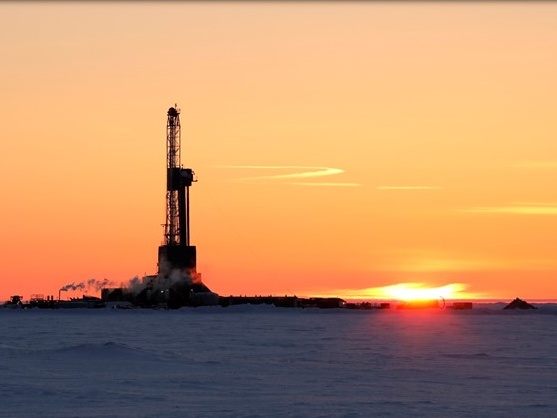
As the amount of oil flowing through the Trans-Alaska Pipeline System declines, big new finds on the North Slope are kindling a lot of excitement in Alaska. Speaking at a recent conference in Anchorage, Department of Natural Resources Commissioner Andy Mack called out one find in particular.
“We think that Pikka is going to be critical to bring production not only in balance, but to raise it tremendously,” Mack said.
Mack was referring to the Pikka Unit on the North Slope, the site of a major discovery Armstrong Oil and Gas announced last year. Armstrong and its partner Repsol, a Spanish company, say a development there could produce about 120,000 barrels of oil per day. That’s almost a quarter of the amount currently flowing through the pipeline. Armstrong Energy director Ed Kerr said the company aims to deliver first oil in 2022.
“We are actually moving ahead,” Kerr said. “We’re not contemplating it, we’re not formulating our thoughts on it — we’re prosecuting on it.”
Since Armstrong bought its first lease in Alaska in 2001, the company has made two other discoveries on the North Slope, but it sold those assets to an Italian company, Eni. Kerr says Armstrong plans to hang on to this find, which it calls the Nanushuk project.
“The reason we want to stay in on this is, candidly, it is much bigger than other projects we’ve worked on, and we’ve worked on very large projects in Alaska,” Kerr said.
In January, Kerr said the company hopes to start designing Nanushuk’s central processing facility, which would get oil ready to send down the pipeline. And even though Armstrong’s discovery is already being called a game-changer, the company thinks there’s even more oil to be found in the region. This winter, Armstrong is drilling an exploration well about 20 miles away from their planned development.
“We’re drilling a well that’s completely separate and a different idea that we have high hopes for, as well,” Kerr said. “So we’re actually moving forward on multiple fronts on this, and it’s an exciting time. We’re as excited as we can be on everything that’s going on.”
One thing Armstrong is less excited about this winter is negotiating with lawmakers. Like other small companies, Kerr said Armstrong is worried about how oil production taxes could change as the legislature takes on the state’s budget crisis. That means this winter, Alaskans can expect Armstrong to have a presence both on the North Slope — and in Juneau.
Elizabeth Harball is a reporter with Alaska's Energy Desk, covering Alaska’s oil and gas industry and environmental policy. She is a contributor to the Energy Desk’s Midnight Oil podcast series. Before moving to Alaska in 2016, Harball worked at E&E News in Washington, D.C., where she covered federal and state climate change policy. Originally from Kalispell, Montana, Harball is a graduate of Columbia University Graduate School of Journalism.




